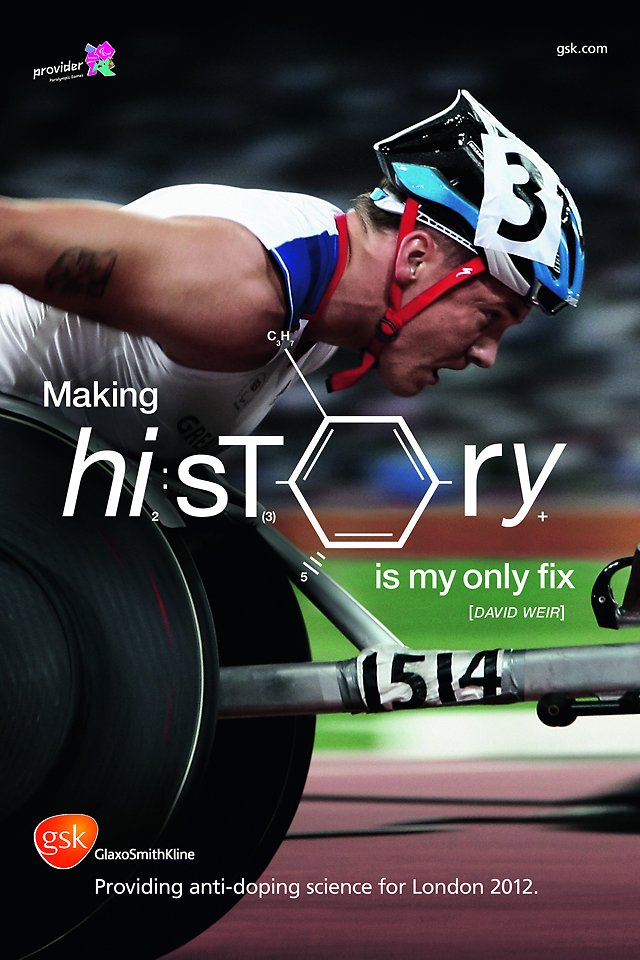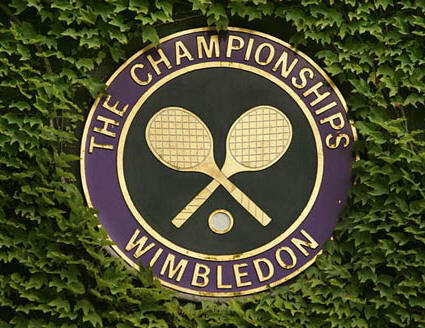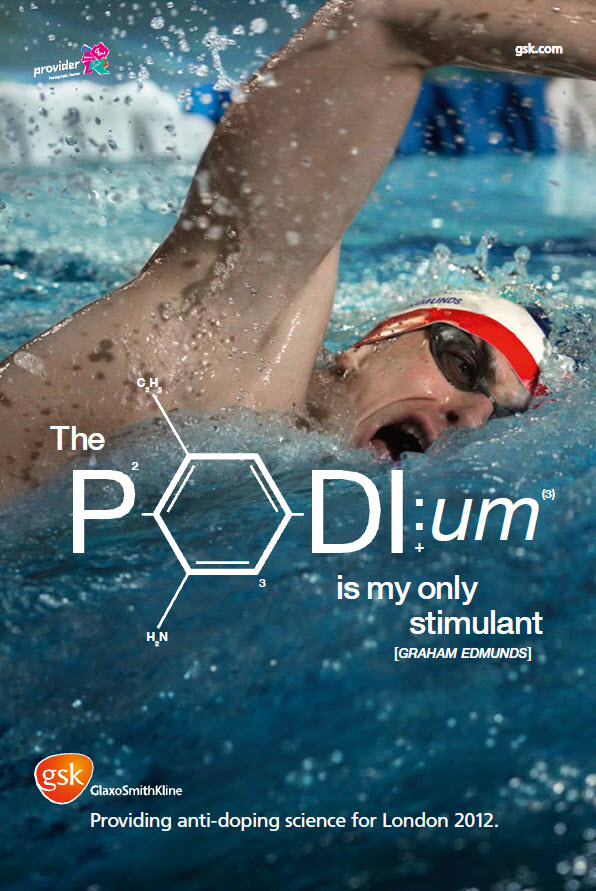GlaxoSmithKline's Anti-Doping Campaign for the London 2012 Olympics
 |
One of the first noticeable absences is that of big name British superstars that the whole world knows about like tennis player, Andy Murray. This is because GSK wanted to position the athletes as "heroes-to-be," whose "chances to become a great hero are not very high, which improves identification by the public...[it's] the creation of a 'one-of-us story'. On the other hand, the hero is always superior to [the audience], mentally and/or physically. These mental and/or physical strengths are the social values and positive features that teach and inspire society and they will help the hero on his quest, filled with obstacles and ordeals" (Hoebeke, 660). By choosing to utilize athletes that the audience has a better chance of connecting with and growing with over someone who is already in the spotlight, allows the audience to become invested in not only the athlete but the cause as well. As Burns puts it, "It is much easier to justify the sacrifices you have made when you see that others, Olympic athletes, have also made sacrifices to reach their dreams" without the use of steroids (Burns, 21). Knowing their story, that they are clean, puts the audience on t heir side. Through this, the audience is supposed to follow the athlete on their journey to becoming a hero. We can see this as another possible reason for why the campaign was unequally divided by gender and not by the sport played or whether in the Olympics or Paralympics. It is often noted that coverage of the Paralympic games and athletes is very low if at all. When they are covered "the coverage is 'charitable and patronizing'... and thus reinforces negative stereotypes about people with disability, including their achievement as athletes" (Tanner, 107). Through this campaign though, the Paralympic athletes receive just as much attention as the Olympic athletes do. They are seen as individuals. The campaigns appellation or the ad's "hey you" adds to the stakes by covering the whole spectrum. It takes away the justification that people use when doping. The possible doper can no longer say that they need the extra boost in their performance because they can't do it on their own. The Paralympic athlete is used as an inspiration to let people know that with the right amount of work and dedication anyone is capable of anything. |
| As I mentioned, Andy Murray is huge in Britain yet he was not featured. His sport wasn't either. Through a study conducted by Hebert et al. on sports in advertisement, "the most frequently appearing sports performed for power-and-performance were tennis and soccer" (Hebert, 144). With tennis and soccer seen as the most frequently used sports to show power and performance, and England's strong connection to both through the Premier League and Wimbledon, this absence may seem hard to explain. GSK, however, was promoting their benefit to the Olympic games. If they had chosen to use Murray or soccer star, Wayne Rooney, their statement to keep the London 2012 games pure would not have been so impactful because it wouldn't be as clear as to what they are supporting. GSK wanted the athletes in the advertisements to be relatable, someone you could see yourself being. When you use the more popular sports like soccer and tennis, you find that those athletes are harder to relate to because they have a celebrity status that ties in with it. |  |
 |
To further the absence of big name heroes and their sports, there are no athletes from other countries. This explains the ads reach. It is not necessarily meant for people around the world to read it (except for the ad on the building which only those people from around the world who made it to London get to read). While GSK is a global company, this ad campaign was designed to garner the attention of the British market and not the world. As was mentioned at the very beginning, the ad campaign is not supposed to be a direct advertisement for GSK but for how proud they are to keep the London games clean. They want to use that excitement to hype up support for athletes competing for the United Kingdom, which in turn builds a relationship between GSK and those fans. |
| Looking at the athlete's faces, not one of them is smiling. In fact, as discussed in the theme section they all seem to show a sign of struggle. What their faces do not show though is ease in what they or doing or defeat. The campaign is about keeping athletes from doping. The lack of ease explains to the audience that it is not going to be a walk in the park. Getting to the Olympics without the help of banned substances takes a lot out of a person. It takes "blood, sweat, and tears" but there is also a lack of defeat seen throughout the campaign. We do not know if the athlete's have won or lost but we do know that they have not been defeated. There is the absence of competition, which shows that the idea of defeat doesn't come from the athlete's performance in regards to their competitors. This battle is one within themselves and the athletes pictured in this campaign have not lost. They did not succumb to the pressure to take a banned substance to boost their performance. They did it on their own and that needs to be seen as a victory in itself. |  |
 |
We discussed on a previous page where we were positioned with the athlete in terms of distance. It was noted that the photographs used were up close connecting us to the athlete. In positioning us up close to the athlete, there is an absence of a single full body shot. As the audience, the advertisers do not want to risk us not connecting with the athletes. The further back we get, the larger the frame gets and the more we are positioned to feel like a spectator instead of as if we are right there next to them on the track, in the pool, or spotting them. GSK wants the audience to become the voice inside these athlete's heads that keeps pushing them. They want the audience to be the "drug" or the "stimulant" or the "fix" and they want the audience to know that it is through the joys of playing the sport or being in the moment that they get their strength and motivation not the drugs. |
This analysis can go in so many directions but I narrowed it down to a few. That said, we are nearing the end of the run and the last leg is the closing ceremony!
The Themes of Sports The Closing Ceremony